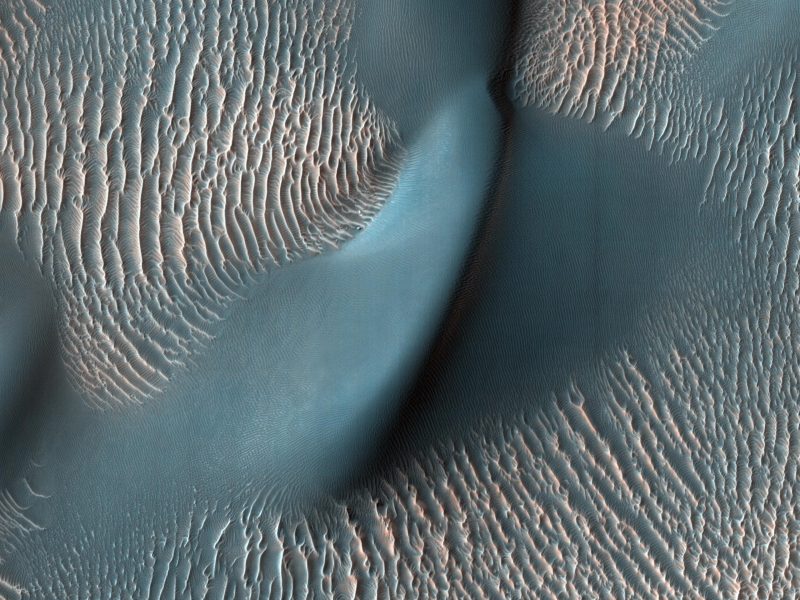
Mars is a dry desert world, covered in reddish sand. In our lifetimes, spacecraft have revealed its amazing scenery and sweeping landscapes. It’s a world at once reminiscent of Earth, yet alien and strange. This week, to celebrate the launch of the Mars Reconnaissance Orbiter 15 years ago, NASA has shared some of the orbiter’s most breathtaking images. We found these images very beautiful and think you will, too, whether you’re a Mars aficionado or a newbie.
The Mars Reconnaussance Orbiter (MRO) has three cameras: The Mars Color Imager (MARCI), which has a fisheye lens for a daily global view of the planet; the Context Camera (CTX), which provides 19-mile-wide (30-kilometer-wide) black-and-white terrain shots; and the High-Resolution Imaging Science Experiment (HiRISE), which produces the beautiful and jaw-dropping images that MRO has become famous for. HiRISE takes the highest-resolution orbital images of the Martian surface ever obtained, and in full color. They show sand dunes, avalanches, craters, dust devils, old river and lake beds, mountains, gullies and more in exquisite detail. MRO has even been able to photograph rovers such as Curiosity and Opportunity, on the planet far below. It has also photographed the two small Martian moons, Phobos and Deimos.
The image at top of the sand dune and ripples in Proctor Crater is in enhanced color to bring out details. Like other images of still-active sand dunes, it shows that Mars isn’t a completely inactive, motionless world. Leslie Tamppari, MRO deputy project scientist at JPL, said in a statement:
The more we look, the more we discover. Before MRO, it wasn’t clear what on Mars really changed, if anything. We thought the atmosphere was so thin that there was almost no sand motion and most dune movement happened in the ancient past.
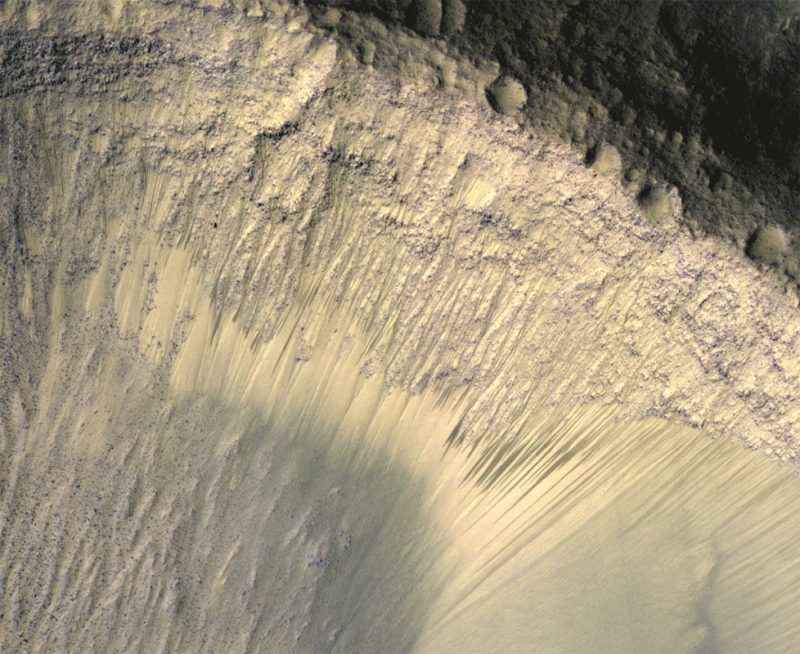
In the image above, we see dark streaks, called recurring slope lineae (RSL), on a steep crater wall in Valles Marineris. There is still much debate as to whether those might be small streams of briny liquid water.
MRO has also watched dust storms on Mars, as seen in the image below. Most storms are fairly small and regional, but others can grow to encompass the entire planet, about once or twice a decade. These are called “planet-encircling dust events.” MARCI took the images in the summer of 2018. This was the storm that darkened the skies over the Opportunity rover and caused it to run out of power from its solar panels.
In the view from May, we see the Valles Marineris chasms (left), Meridiani Planum (center), an autumn dust storm in Acidalia Planitia (top) and the early spring south polar cap (bottom). The same regions are in the view from July, but completely obscured by dust.
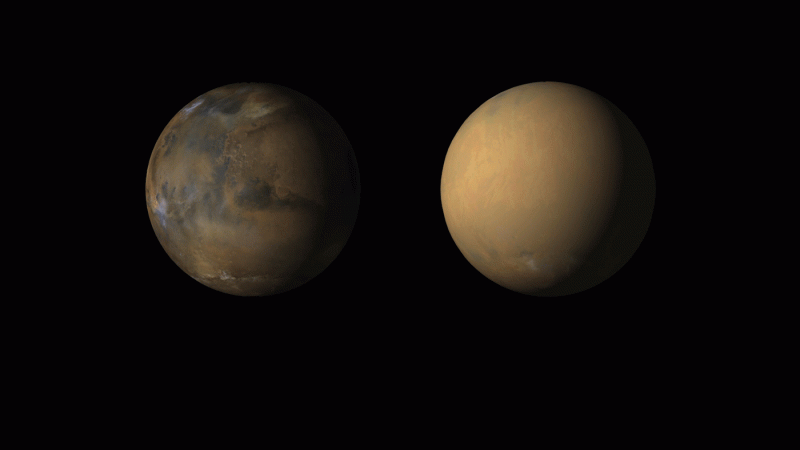
Dust storms aren’t the only dusty phenomenon that MRO has seen. The next image below is a good example of a serpent-like dust devil, captured on February 16, 2012. The image was taken in a late spring afternoon in the Amazonis Planitia region of northern Mars.
The plume is about 98 feet (30 meters) in diameter, and based on the length of the shadow, is more than half a mile (800 meters) tall!
A westerly breeze created the S-like arc in the plume. Just like on Earth, Martian winds get their energy from the sun, even though Mars is much farther from the sun than Earth. Even though winds have lessened this time of year, they are still strong enough to produce dust devils like this one.
Dust devils have also been seen up close on the ground by the rovers Opportunity, Spirit and Curiosity.
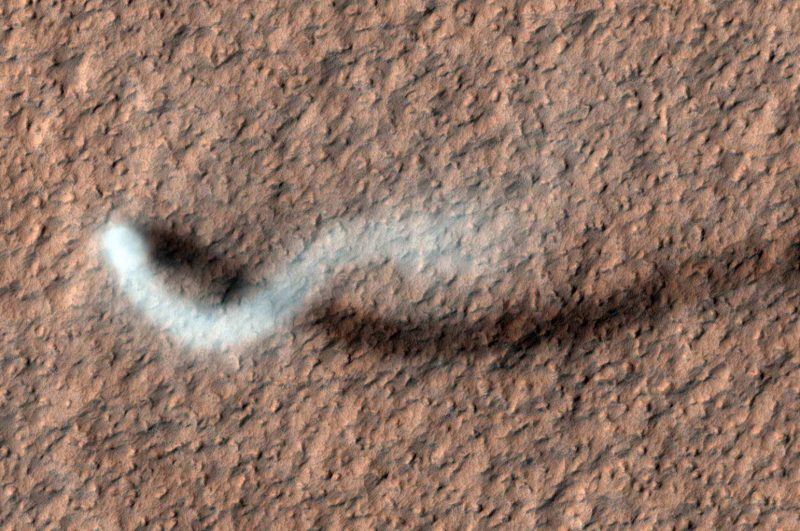
Dust storms and dust devils aren’t the only way that Mars is still active. Avalanches are another common occurrence, especially when seasonal ice vaporizes in the warmer spring.
In the image below, taken on May 29, 2019, MRO captured avalanches on 1,640-foot-tall (500-meter-tall) cliffs at Mars’ north pole. The avalanches also had the effect of exposing hidden layers of ice and dust in the cliffs, going back millions of years or more. For scientists, these layers are like reading the book of Mars’ history, providing clues as to how the environment changed in the region over time.
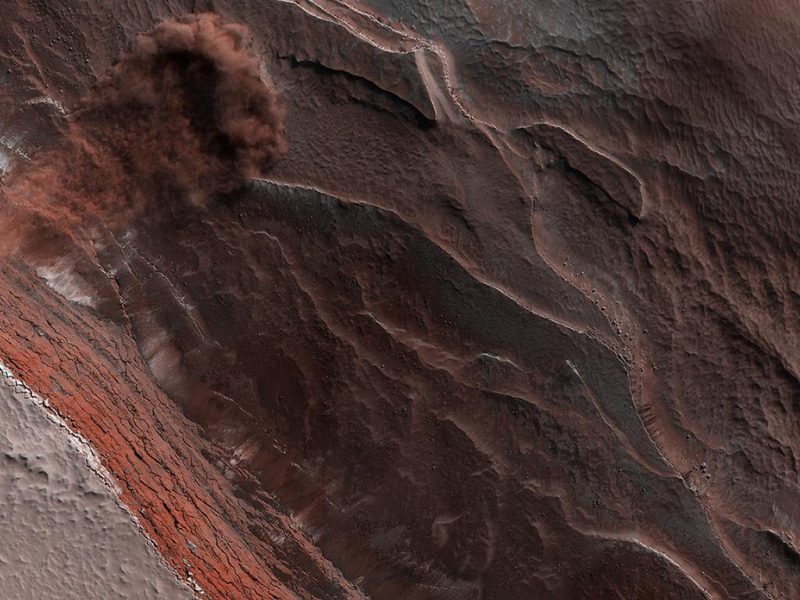
Another thing that MRO is good at is finding new craters. Such “fresh” craters can be identified by the new-looking ejecta blanket of rocky debris around them. Many more of these can be seen on Mars due to the planet’s very thin atmosphere, which doesn’t burn up larger meteors as easily as Earth’s atmosphere. More of them therefore actually impact the planet.
MRO has found over 800 new impact craters so far during its mission. The one pictured below is about 98 feet (30 meters) across. The impact was strong enough to throw ejecta as far as 9.3 miles (15 km).
On Mars, craters also last much longer than they do on Earth, again because of the thin atmosphere that erodes them more slowly.

MRO has been orbiting Mars since 2006, and has taken no less than 6,882,204 images, generating 194 terabytes of data. Those views of the red planet have helped to revolutionize our knowledge about this familiar yet alien world.
MRO has also taken images of mud volcanoes, and a recent study showed that mud which flows from them will flow in a manner similar to lava on Earth.
As well as taking incredible images, MRO also studies Mars with multiple other instruments. It measures the temperature of the atmosphere and dust and water vapor using Mars Climate Sounder (MCS), peers beneath the surface with radar using Shallow Radar (SHARAD) and analyzes different minerals on the surface in rocks and sand with the Compact Reconnaissance Imaging Spectrometer for Mars (CRISM).
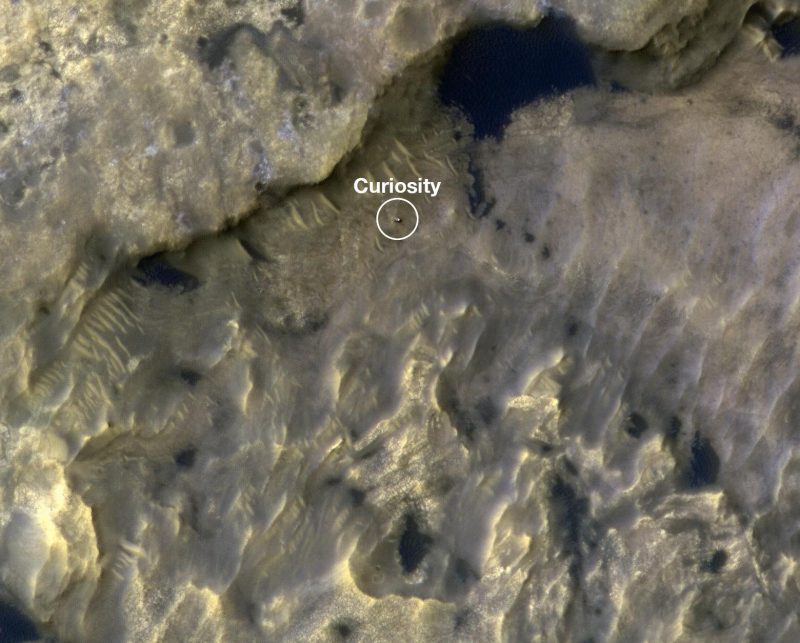

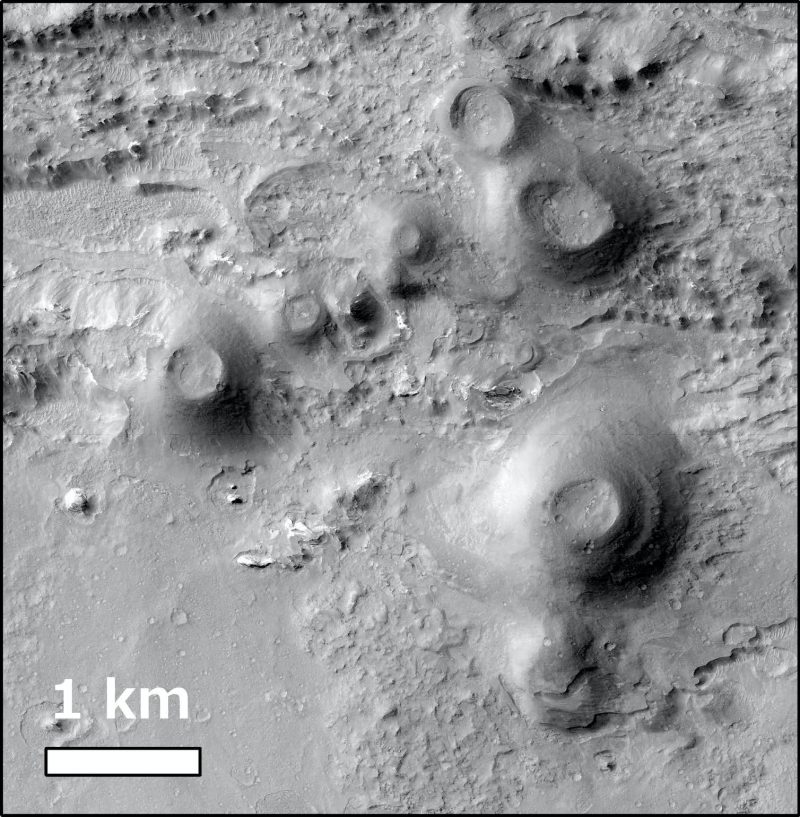
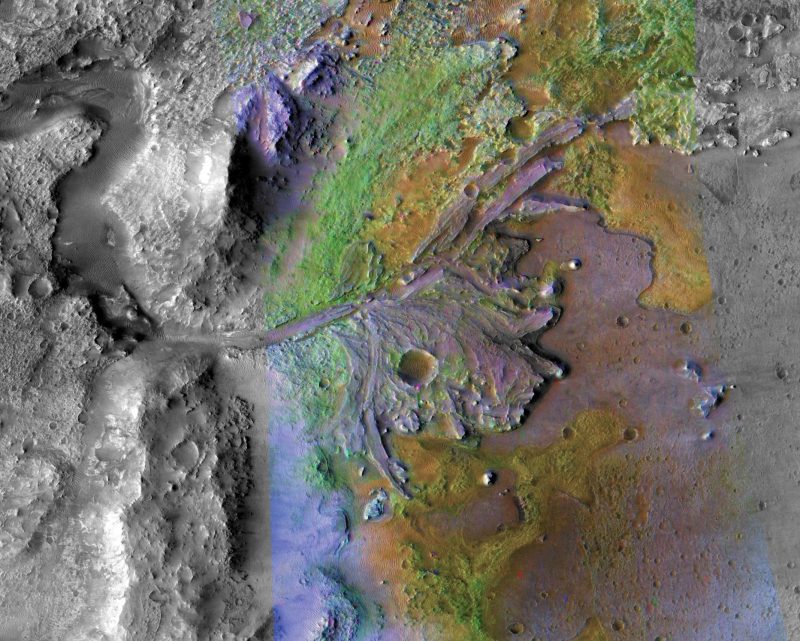
The images sent back by MRO have been some of the most incredible of any planetary mission, and are the perfect way to celebrate the 15th anniversary of the launch. Along with all the other data to date, they have forever changed our view and understanding of the red planet.
More information about MRO is available on the mission website. Check out the HiRISE website for many thousand more images! You can even make a request for the spacecraft to take images of specific targets.
Bottom line: NASA has posted amazing photos of Mars to celebrate the 15th anniversary of the launch of Mars Reconnaissance Orbiter.











